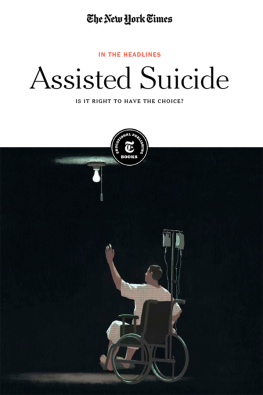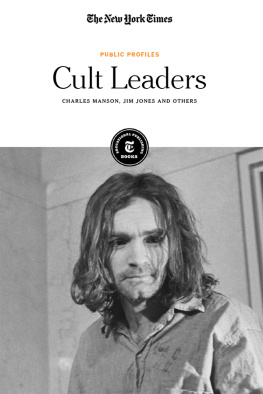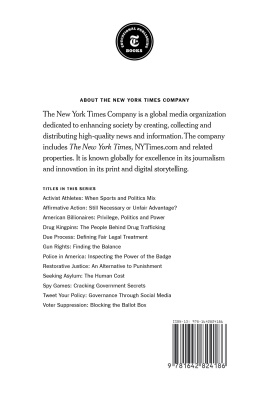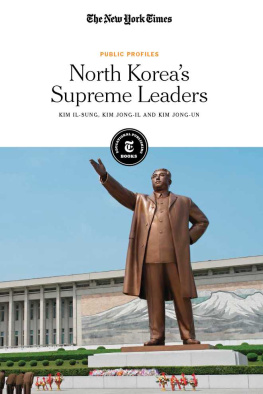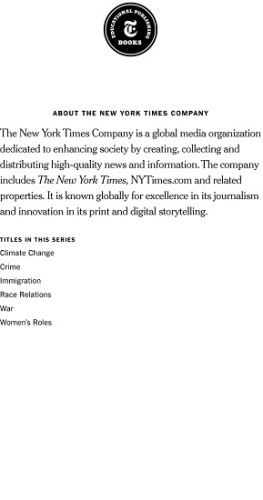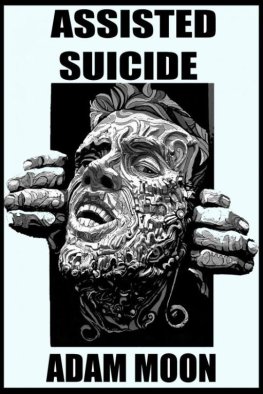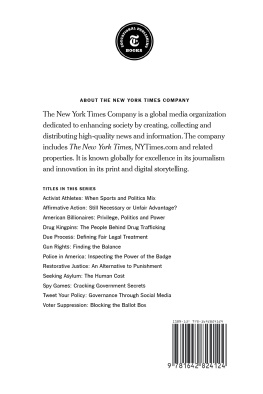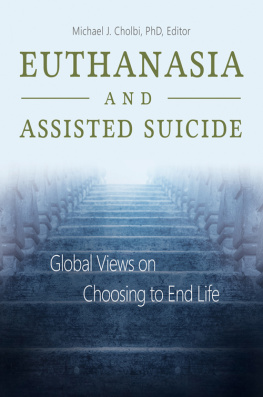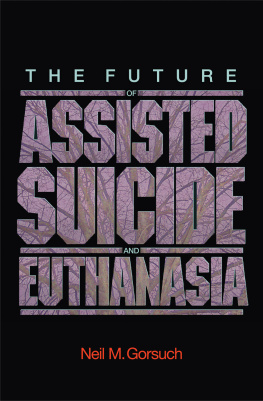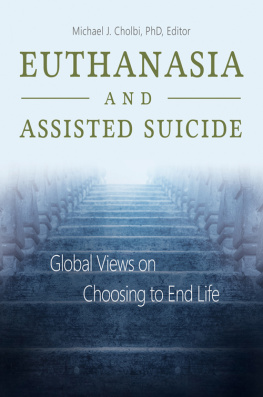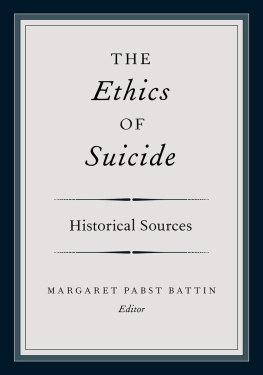Published in 2020 by New York Times Educational Publishing in association with The Rosen Publishing Group, Inc. 29 East 21st Street, New York, NY 10010
Contains material from The New York Times and is reprinted by permission. Copyright 2020 The New York Times. All rights reserved.
Rosen Publishing materials copyright 2020 The Rosen Publishing Group, Inc. All rights reserved. Distributed exclusively by Rosen Publishing.
First Edition
The New York Times
Alex Ward: Editorial Director, Book Development
Phyllis Collazo: Photo Rights/Permissions Editor
Heidi Giovine: Administrative Manager
Rosen Publishing
Megan Kellerman: Managing Editor
Julia Bosson: Editor
Greg Tucker: Creative Director
Brian Garvey: Art Director
Cataloging-in-Publication Data
Names: New York Times Company.
Title: Assisted suicide: is it right to have the choice? / edited by the New York Times editorial staff.
Description: New York : New York Times Educational Publishing, 2020. | Series: In the headlines | Includes glossary and index.
Identifiers: ISBN 9781642822038 (library bound) | ISBN 9781642822021 (pbk.) | ISBN 9781642822045 (ebook)
Subjects: LCSH: Assisted suicideJuvenile literature. | Assisted suicideMoral and ethical aspectsJuvenile literature. | Assisted suicideSocial aspectsJuvenile literature.
Classification: LCC R726.A875 2020 | DDC 362.28dc23
Manufactured in the United States of America
On the cover: Illustration by Hokyoung Kim.
Introduction
ON NOV. 1, 2014, Brittany Maynard took a mixture of barbiturates, ending her own life with her family by her side. Her death received national attention: After her diagnosis of terminal brain cancer at the age of 29, Maynard became a vocal supporter of the Death With Dignity movement, advocating for the right of individuals to have choice in the ending of their lives. A letter she wrote outlining her circumstances and her beliefs for CNN went viral, drawing attention to the issue of assisted suicide.
Maynards death became a turning point for the debate of assisted suicide (although many proponents prefer the term aid in dying). Supporters of the movement were galvanized by her articulate plea for the autonomy to end her own life, while detractors worried about the ethics of ending someones life and the precedent that would establish. Following her death, California became the fifth state to legalize physician-assisted suicide.
Assisted suicide might be one of the most polarizing issues Americans face today. Brought into view by the practices of Dr. Jack Kevorkian, who in the 1990s illegally assisted hundreds of patients in ending their own lives, Americas understanding of assisted suicide has evolved over the years. Today, with more and more states voting on measures to expand the availability of physician-assisted suicide to terminally ill and elderly individuals, the legality and acceptability of the practice seems to be increasing.
And yet, views on the issue vary greatly. Those with the widest range of views are doctors, who might routinely see patients suffer from long illnesses, but who are also bound to follow the Hippocratic oath to do no harm. Religious groups see little distinction between euthanasia and murder. Men and women who have seen family members die prolonged painful deaths advocate passionately for the right to choose, seeing the possibility for shortening an unbeatable agony. And individuals with chronic and long-term illnesses are split: While many fight for the possibility of choice, others are wary of measures that might give someone else the authority to end their lives without their full consent.

John Shields with his wife, Robin June Hood, and their dog Diego in Victoria, British Columbia on March 15, 2017. The Canadian government legalized what it termed medical assistance in dying, which allowed patients like Shields to feel empowered over his incurable disease rather than feel crippled by it.
The debate over assisted suicide bridges a number of ethical dilemmas. If parties can agree that terminally ill individuals can have the right to end their lives, then the question becomes: What determines a terminal illness? Should elderly adults who are suffering from no acute symptoms but whose quality of life has deteriorated also be eligible for assisted suicide? In other words, where do we draw the line?
Even as America struggles to identify the solutions to these questions, internationally, assisted suicide has expanded throughout Europe. The Netherlands is a pioneer in the administration of physician-assisted suicide, allowing for anyone with unbearable suffering to make the choice to end their own lives. In Italy, a few recent cases have divided the public and resulted in new laws that allow for refusal of end-of-life care, and in France, legal challenges are still making their way through the system.
The articles in this book speak to the array of ethical quandaries, legal battles and personal stories that make up the face of this uniquely complicated issue. They speak to whats at stake for individuals who have requested the right to die as well as to what makes fulfilling their desires so challenging. The reporting covers the history of the Dying With Dignity movement in all its incarnations, from its grassroots origins to its increasing legal acceptance.
The last chapter of this book is devoted to a single story published by The New York Times in 2017. Reported by Catherine Porter, the story follows John Shields, a retired chaplain in Vancouver who decided to arrange and hold his own wake before ending his life. What emerges from this story is a testament to the personal significance of assisted suicide for individuals and their loved ones.
CHAPTER 1
Making the Case for Assisted Suicide
The issue of assisted suicide brings up a vast array of moral and ethical dilemmas individually and collectively. And yet it has also gained a devoted group of advocates who passionately make the case for its legality. In this chapter, writers, doctors, family members and terminally ill individuals measure what is at stake in end-of-life care, arguing for why physician-assisted suicide might be necessary and examining when it might result in unintended consequences.
Fatal Mercies
OPINION | BY FRANK BRUNI | AUG. 10, 2013
FEW OF US get anything approaching the degree of control wed like over our lives. Must we also be denied a reasonable measure over our deaths?
Thats all that Joseph Yourshaw, 93, seemingly wanted: to exit on his own terms, at home, without growing any weaker, without suffering any more. And thats all that one of his daughters, Barbara Mancini, 57, was trying to help him do, according to the police report that set her criminal prosecution in motion.
Shes charged, under Pennsylvania law, with aiding a suicide, a felony punishable by up to 10 years in prison. Such a sentence would be ludicrous, but so, by all appearances, is the case against her: a waste of public resources, a needless infliction of pain on a family already grieving, and a senseless prioritization of a frequently ignored (and easily ignorable) law over logic, compassion, decency.

